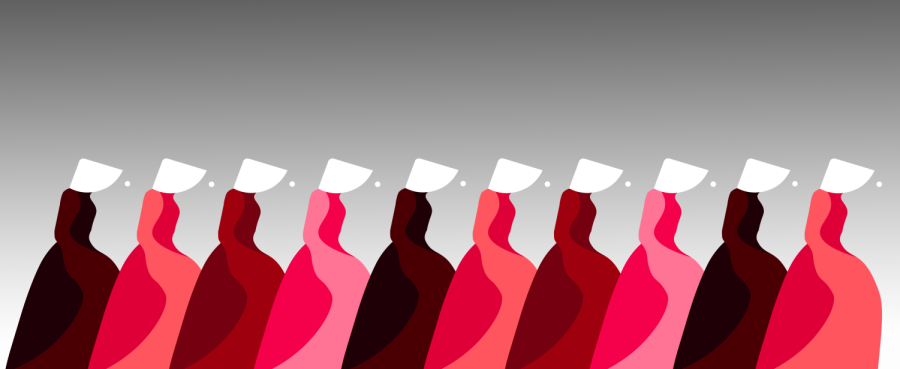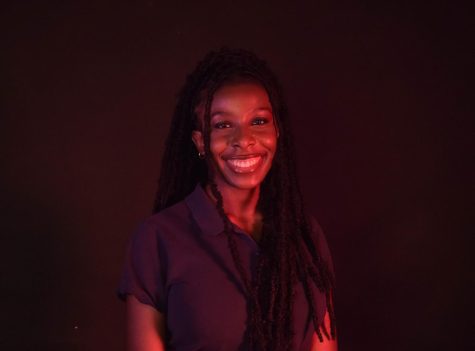In December of 2011, famous dystopian author Ally Condie posited that “the beauty of dystopia is that it lets us vicariously experience future worlds.” However, the word “dystopia” has been invoked to describe worlds much closer than the future. Instead, dystopian fiction has become a way for us to rally around real societal issues.
Among the most renowned works of speculative fiction, George Orwell’s Nineteen Eighty-Four and Margaret Atwood’s The Handmaid’s Tale have sprung up in recent decades to more than just speculate on possible futures. Instead, both novels have been used to comment on real-life civil rights issues.
As these references to fictional texts become more relevant to current social issues, it is clear that the social power these books hold is only increasing.
DYSTOPIA ENTERING THE MAINSTREAM
Between the two, Orwell’s Nineteen Eighty-Four is the most broadly referenced. As early as the 2000s, journalists have used it as a way to describe foreign totalitarian regimes.
In 2003, journalist Charlotte Allen at the Los Angeles Times compared Fidel Castro’s regime in Cuba to Nineteen Eighty-Four. In her article titled “It’s Always 1984 in Cuba,” she elaborated on the strict limits to both the internet and libraries in Cuba.
In 2002 and 2020 respectively, journalists Leela Jacinto and Josh Saunders made the same comparison but instead with North Korea. Jacinto’s article entitled, “The Country Where Big Brother Is Watching” references the fictional dictator of Orwell’s novel, Big Brother. Saunders’s article, “North Korea: George Orwell’s bizarre link to Kim Jong-un’s regime exposed” once again references the novel.
The overturning of Roe v. Wade in June of this year not only brought Americans to protesting on the streets but running to social media platforms as well. One viral Tweet exemplified the problem of using fictional texts as the main reference point for civil rights issues, saying, “It turns out that ‘1984’ and ‘The Handmaid’s Tale’ aren’t dystopian fiction. They’re prophecies.”
However, when we focus on fictional texts as the catalyst for civil rights movements it allows us to forget the reality they are based upon. We shouldn’t view 1984 and The Handmaid’s Tale as prophecies but texts that pull from events and trauma that real people experience and will continue to experience until we manage to prevent it.
While The Handmaid’s Tale has once again gained popularity from its use in protests for the Supreme Court Case, the book has been invoked for reproductive rights protests far before then.
THE GOLDEN GLOBES & ATWOOD
Famously in 2018, celebrities showed up to the Golden Globe Awards in black formal attire in support of the MeToo Movement. Their goal was to use their status to platform marginalized people.
Actress Viola Davis said in her Harper’s Bazaar interview, “I hear those people who are nameless, faceless every day who don’t have a platform to talk…I hear those voices.”
Conversely outside the award show, The Handmaids’ Coalition protested as well adorned in bonnets and dark red gowns. They had the same goal of platforming marginalized experiences but instead utilized imagery of Atwood’s novel.
In the end, the show was remembered for advocating for the same cause using two very independent techniques. While the majority wore black to symbolically represent those who were constantly refused a spotlight and a voice to speak on their experiences, the Handmaid’s stood in stark contrast.
The Handmaids’ Coalition spoke out, arguing their mission always is to create an America where everyone has a voice. However, people began to question whether showing up to an already established protest using alternate methods was undercutting the movement more than uplifting it.
In September of 2021, organizers of the Saturday’s Women’s March officially announced that attendants dressed in attire referencing The Handmaid’s Tale will not be let in. According to the organizers in an interview with The Wrap, The Handmaid’s Tale is used “primarily by white women across the country” excluding diverse perspectives.
Essentially, they presented the current argument surrounding the use of dystopian fiction like The Handmaid’s Tale and Nineteen Eighty-Four. If we hold texts written from limited perspectives and as the rallying cry for civil rights movements, we erase the stories of marginalized people they are based off of.
FOSTERING BIAS
Author of the article “The Handmaid’s Tale and Abortion Rights: Protesters Ignore Truths About Reproductive Access,” Katie Fustich, said “I think as people get older [The Handmaid’s Tale and Nineteen-Eighty Four] remains their only frame of reference, if you consider whoever is writing this book certainly has their own opinions and agenda or is writing from a specific space and time in history.”
If we allow fictional texts to construct our thoughts of real-life civil rights crises we are open to biases of the author and the perspective they center their stories around.
The Handmaid’s Tale writes off the people of color in the story by explicitly explaining their lack of presence away. In the story, the operation known as “The Children of Ham” (an allusion to the curse of the biblical character Ham that was historically used as a justification for slavery)relocates Black people outside of the tolitarian society.
As a result, the story entirely centers on the experiences of white characters. Even though the basis of the brutality Atwood uses in her story are from real events about people of color.
The Handmaid’s Tale and 1984 are not prophecies of the future. They’re an amalgamation of historical events from the past. When speculative fiction is the sole focus of human rights protests and arguments, it divorces us from the reality they’re based off of.




